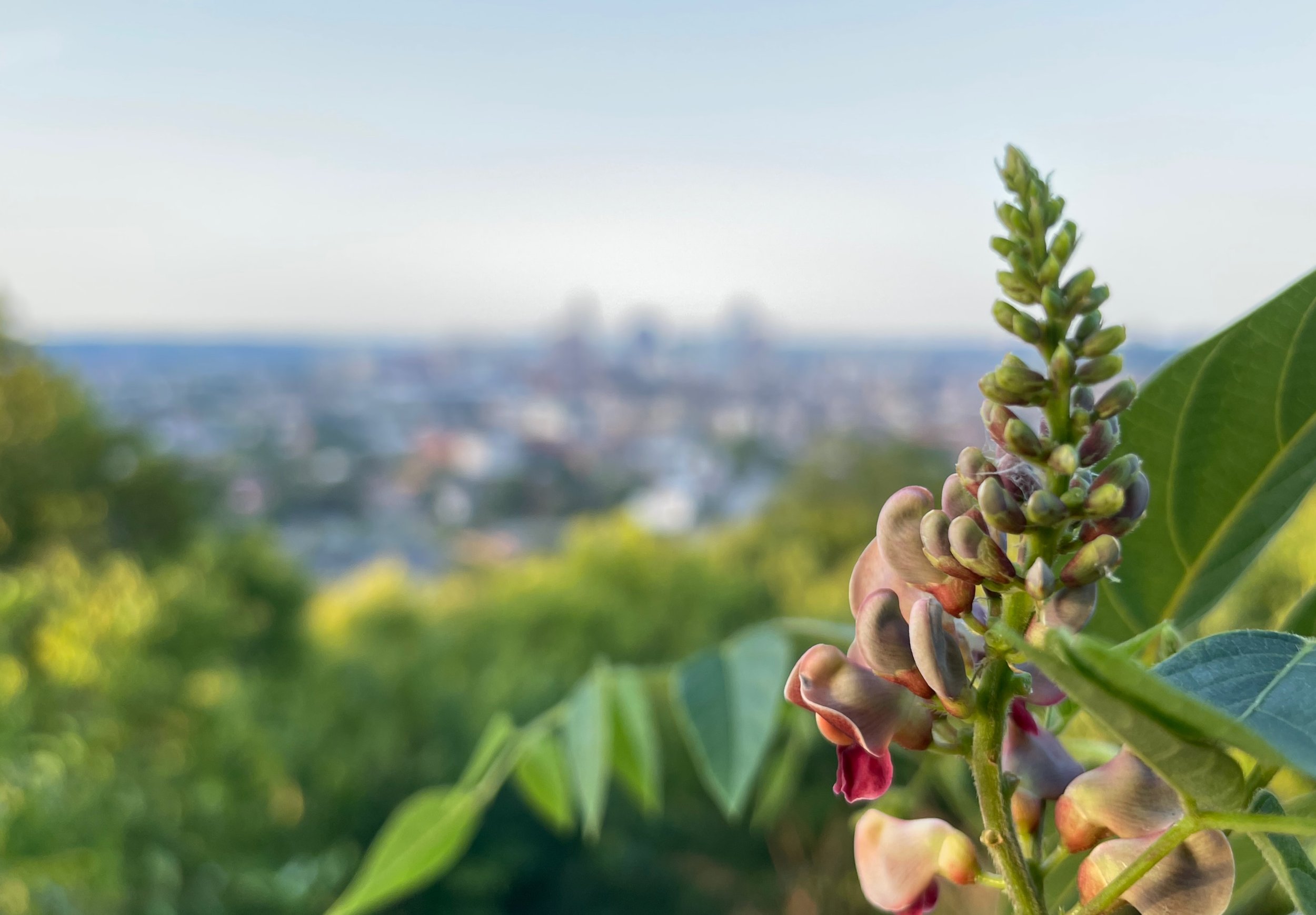
An initiative of the University of Cincinnati, Cincinnati Parks, Ohio History Connection, and the Harriet Beecher Stowe House
The Stowe Garden project is an initiative to restore the two-acre historic landscape around Cincinnati’s Harriet Beecher Stowe House as an outdoor lab and classroom and as a vibrant greenspace for the community. The museum has undergone a major interior restoration and serves students, families, and visitors from across the country. The landscape should reflect the museum’s work. Located at a busy urban intersection, the property faces several challenges, including an outdoor classroom overlooking a gas station, an underused event space due to traffic noise, and a wooded area littered with detritus from demolished homes and years of illegal dumping. We will remove invasive species and reintroduce native plants, restoring the historic plant communities that would have grown in the area. Within this naturalistic setting, we will incorporate historic kitchen and herb gardens, as well as art installations. Our goal is to bring history, art, and horticulture together in a beautiful, educational, and environmentally sensitive greenspace.
Okra illustration by Francisco Manuel Blanco. Public Domain, https://commons.wikimedia.org/w/index.php?curid=977689
Kitchen and Herb Gardens
Within the restored landscape we will embed ornamental, kitchen and herb gardens highlighting two eras in the house’s history: the nineteenth-century Beecher residence and the twentieth-century Edgemont Inn, an African American boarding house and tavern. The gardens will feature medicinal herbs used by the Beecher sisters, flowers grown by the African American women who were the museum’s first curators, and crops from the African plant diaspora.
Catharine Beecher, garden design from A Treatise on Domestic Economy (1856), p. 334.
Invasive plant sculpture garden
Some of the plants we should include for historical reasons are now considered invasive, so we won’t plant them. Instead, fine arts students are creating sculptures of these plants, along with signs that tell their story. The result will be an invasive plant sculpture garden set in a restored native habitat.
By displaying non-native, legacy species (living and sculptural) within a restored native setting, we are emphasizing the vital role of environmental stewardship in preserving both natural and cultural legacies.
Burning Bush illustration by Matilda Smith, Curtis's Botanical Magazine v. 145 , 1919.



